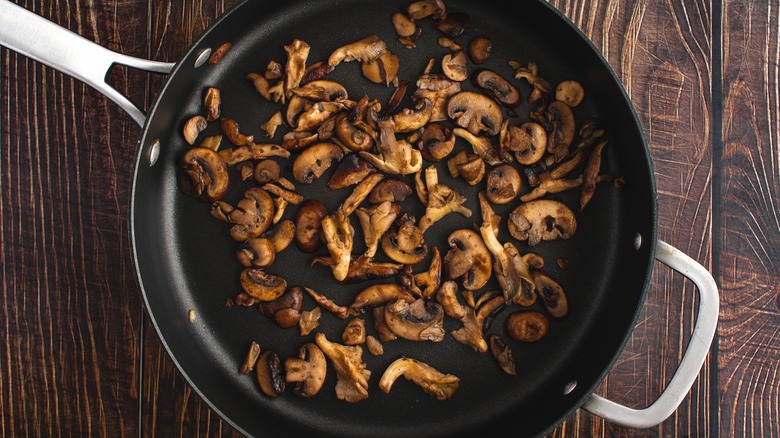In the heart of the United States, where cold weather often lingers and family traditions run deep, there's a recipe that has become a staple in many households. The Vegetable Beef Soup is more than just a meal—it's a warm embrace on a chilly day, a nod to heritage, and a testament to the power of simple ingredients. This soup, rich in flavor and packed with nutrients, has been a favorite for generations, and its versatility makes it a perfect choice for any season.
The Origins of Vegetable Beef Soup
While the exact origin of vegetable beef soup is unclear, it can be traced back to ancient culinary practices where people simmered meat, vegetables, and grains in liquid. The concept of combining these elements into a hearty broth is deeply rooted in global cuisine. In the U.S., this soup has evolved into a beloved comfort food, especially during the colder months. The 5th-century Roman cookbook Apicius de re coquinaria mentions early forms of vegetable soups, highlighting how this dish has stood the test of time.
Today, the vegetable beef soup is a favorite among families across the country. It's not only a source of nourishment but also a way to bring people together. Whether served at a family dinner table or shared with friends, this soup has a way of making everyone feel at home.
Ingredients and Variations
The beauty of vegetable beef soup lies in its adaptability. While the basic ingredients are straightforward, the variations are endless. Here’s a breakdown of what you’ll typically find in a classic version:
- Beef: You can use any cut of beef, such as chuck roast, top round, or even ground beef. Pre-cooked meat is also an option.
- Onions and Garlic: These form the base of the soup, adding depth and aroma.
- Vegetables: Carrots, celery, parsnips, potatoes, green beans, corn, peas, and mushrooms are common additions. Beets and bell peppers are usually avoided.
- Fat: Unsalted butter or olive oil is used for sautéing and thickening.
- Seasonings: Coarse salt, ground pepper, Worcestershire sauce, and Tabasco are optional but add extra flavor.
- Herbs: Fresh parsley, rosemary, and thyme give the soup a fragrant finish.
- Pasta: Ditalini or acini di pepe pasta can be added for texture.
- Flour: Used to make a beurre manié, which helps thicken the broth.
- Tomatoes: Tomato paste and canned San Marzano tomatoes provide a rich, tangy base.
- Wine: Dry red wine like Cabernet Sauvignon or Pinot Noir adds complexity. Alternatively, dark beer like stout or porter can be used for a deeper flavor.
How to Make Vegetable Beef Soup

Making vegetable beef soup is a process that requires patience and attention to detail. Here’s a step-by-step guide:
- Prep the Beef: Cut the beef into bite-sized pieces and season with salt.
- Sear the Beef: Heat olive oil in a large pot and sear the beef until browned on all sides.
- Sauté the Onions: Add chopped onions and garlic to the pot, sautéing until they soften.
- Add Tomato Paste: Cook the tomato paste until it turns a rust-like color, enhancing the soup's depth.
- Deglaze with Wine: Pour in dry red wine or beer to deglaze the pot, allowing the flavors to meld.
- Build the Broth: Add beef stock, bay leaves, and the seared beef, then simmer for 60–75 minutes.
- Thicken the Broth: Make a beurre manié by mixing butter and flour, then stir it into the soup to thicken the broth.
- Add Vegetables: Introduce carrots, celery, parsnips, potatoes, green beans, and corn, letting them simmer for 25–30 minutes.
- Cook the Pasta: Boil ditalini or acini di pepe pasta separately and set aside.
- Sauté Mushrooms: Cook mushrooms in a separate pan until golden brown, then add them to the soup.
- Finish the Soup: Stir in peas, herbs, and optional sauces like Worcestershire and Tabasco.
Serving Suggestions and Storage Tips

This soup is best served with a side of crusty bread or a crisp salad. For a complete meal, pair it with homemade artisan bread or a classic Caesar salad. The soup can be made ahead of time and stored in the refrigerator for up to five days or frozen for up to three months. When reheating, simply heat the soup in a saucepan over low heat until warmed through.
For those who prefer a thicker broth, consider using a roux or slurry instead of a beurre manié. Additionally, if you're avoiding alcohol, the wine can be omitted or replaced with a non-alcoholic alternative like crushed tomatoes and Worcestershire sauce.
Conclusion
Vegetable beef soup is more than just a recipe; it's a tradition passed down through generations. Its ability to bring warmth and comfort to any home makes it a cherished part of American cuisine. Whether you're cooking for a family gathering or enjoying a quiet evening at home, this soup is a reminder of the joy found in simple, well-prepared meals. With its rich history, versatile ingredients, and comforting flavors, it's no wonder why this soup remains a favorite in kitchens across the United States.